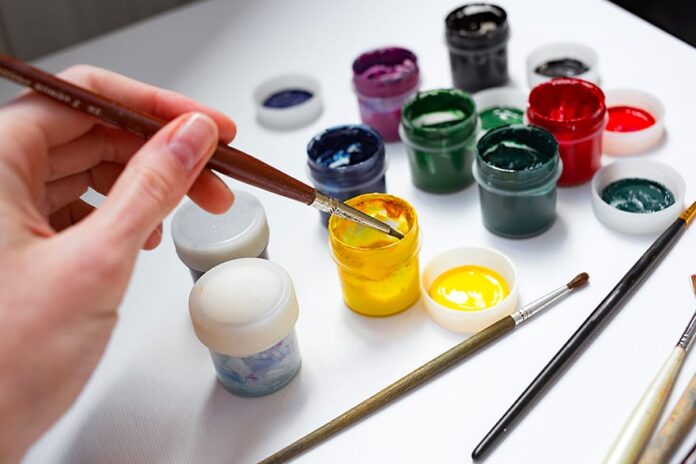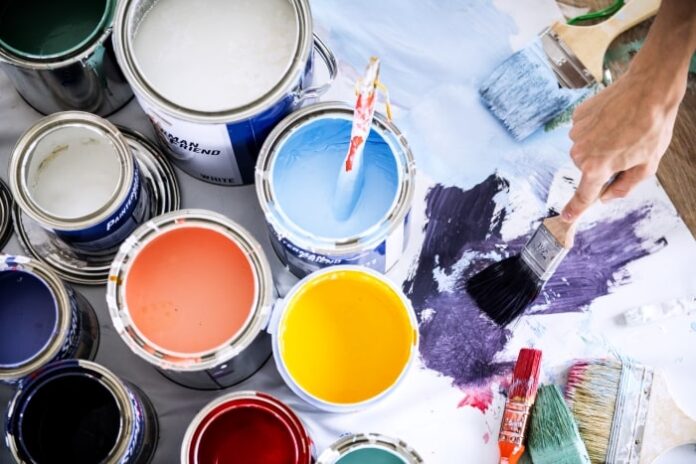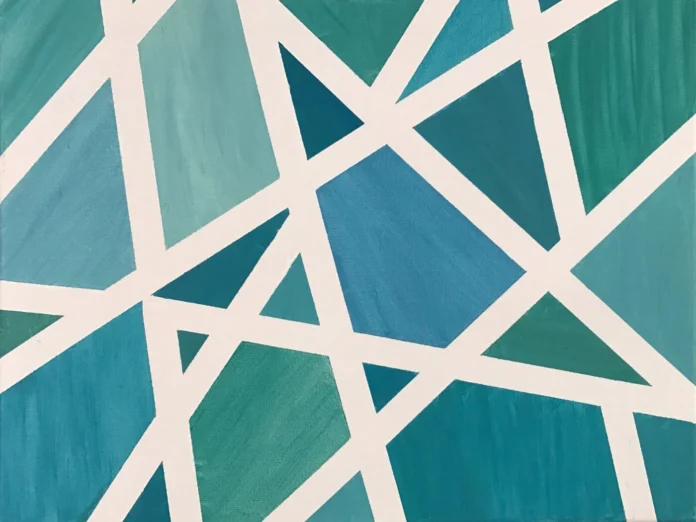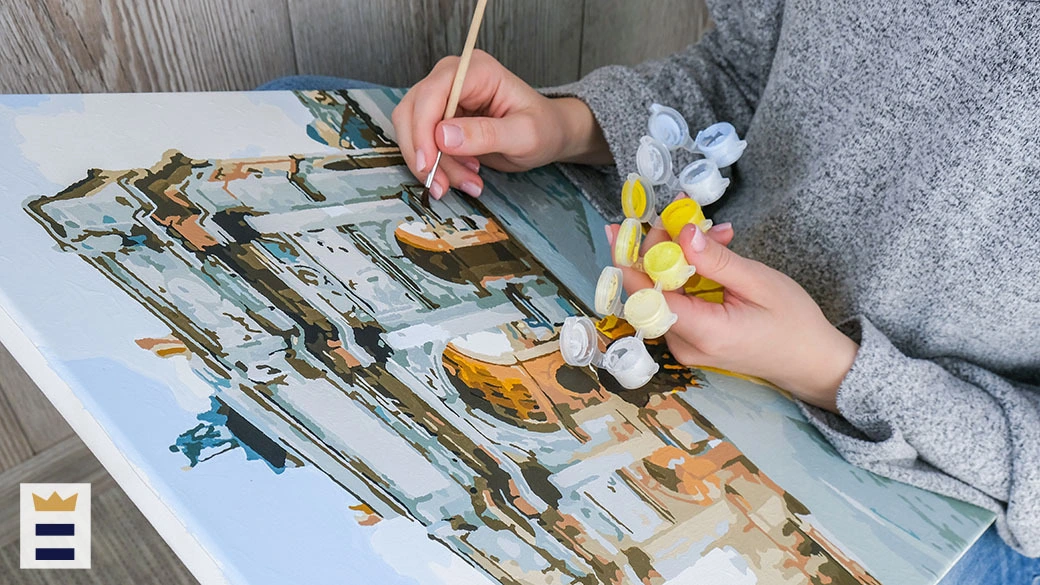Painting by numbers is a simple method. You must work properly. However, you may make blunders when coloring on the board. Painting by numbers has recently become a popular hobby since it makes it easier for artists to work and improve their skills. You may do it for pleasure as well as for a living. Whether you are a newbie or a seasoned veteran, knowing basic problem-solving techniques can come in handy in the future. Painting by numbers is an excellent exercise that provides both leisure and entertainment.
We bear in mind that buying the kit from the appropriate source is critical. paintingbynumbersshop.com is a fantastic location where you could swiftly purchase the finest quality canvas kits at the most reasonable costs. Giving something that is so distinctive or allowing yourself to experiment with thrilling colors leaves you stunned, therefore don’t wait and purchase right now!
Paint by numbers is a fascinating and aesthetically pleasing exercise. Furthermore, it is pretty simple, so anyone could do it. There are, although, certain tips that can help you work more easily and prevent typical blunders and issues. We have collected the 11 most important recommendations for the fulfillment of the work.
1. How to hide numbers properly
The industrial white pencils are great for numerical coverage. Numbers rarely appear through paints after it has settled, although they can occur with light colors. Is there a magic fix? Use a white crayon to color the numerals! When you begin creating, find the data that match the light colors on your board and fill them in with a white pencil. The end product will be spectacular!!
2. For better color bonding, use chalk
A transparent compound roughens the board, enabling acrylic and liquid paints to adhere easier. The canvas solution is transparent (named Clear Gesso in English) and improves canvas stickiness without interfering with the sight of numerals or color divides of the colored regions! The ideal method to apply it is to put it on the canvas and wait 24 hours for it to settle completely before beginning to paint.
3. Use thinner to make paint smooth

Some people like to create artworks with colors that are more fluid and simple to work with. Because acrylic colors are comprised of liquid, a few droplets of water are all that are required. In any event, for more complicated paintings, an acrylic thinner can be used to improve your paintwork. You can now purchase your thinner online.
4. Keeping the canvas stable
Sturdy support may be quite beneficial for painting since it provides a flat and secure surface to work on. Once positioned, tied, or glued to a structure, you may easily provide illumination to your creations at any moment. Paint anywhere you choose, in and around the house, in the sitting room or garage!
5. Using the leftover paint

When you complete a painting, you typically have a lot of unused colors that end up in the garbage. We advocate not putting them away and practicing on a whiteboard with them among a design with numerals. So you can monitor your progress and communicate yourself without being constrained by lines and figures!
6. Improving eyesight
Some customers find the numbers extremely tiny, which may have an impact on their paint by numbers pleasure. Nevertheless, having extremely small patches of color is a fundamental aspect of accuracy and hence more attractive pictures, making it impossible to make works of art with both attractive and enormous numbers. Rather than using a magnifying lens, we recommend photographing your artwork before beginning to create it. As a result, you can easily inspect, zoom in, & view the picture of your artwork and its figures while coloring, even using your cellphone, iPad, or camera.
7. Flattening the folds
Canvas creases and folds are completely typical. Luckily, we have an iron that we can use to press the canvas! Before pouring the color, just use an iron! Iron the sheet from the inside out. Raise the temperature progressively before approaching warmth for Linen / Cotton. The canvases are made of Linen. Keep an eye on the heat of the iron.
8. One number at a time
If you apply one color at a time and keep the bottles of unused colors sealed at all times, you will minimize exposure of the paint to wind for too long and risk it hardening in the bottle. There is no danger of damage when removing the bottles. In reality, the paint is prepared in a very way that it comes looking brand new. In any event, do not be alarmed if you overlook the open container that hardens all the paint! We have the answer! Because these are acrylic colors, they require a few droplets of water to revitalize them, or an acrylic thinning if you want it properly.
9. Zig zag painting

The Zig-Zag method is very well suited to experienced number painters. The idea is to merge the borders of color to make the picture look much better and more polished. Certainly, we must keep in mind that the designated sections are there to help everyone, but they never required directions! Paint is a form of art, and as such, there are no restrictions! Show your imagination, and with practice and thinking creatively, you may build a distinct impressive touch.
10. Wrong paint on the wrong number?
This is one of the most difficult aspects. This problem occurs frequently with the customer since none can maintain the focus indefinitely. Furthermore, if the incorrect color is brighter than the correct color, the mistake seems much more severe. There are, however, no problems without answers! If this occurs to you, the only thing you can do is let the erroneous color dry before applying the correct color over the incorrect one. If the incorrect color is still apparent after the initial application, add more of the correct color and then let it settle. Because the paints in our kits dry rapidly, that shouldn’t be an issue.
11. Brushes are stiff!
Well, one of the most helpful Paint by Numbers Tips will come in useful here! It is critical to keep a cup of water nearby when working. As a result, you may rinse your brush after each use, as well as the issue of the brush becoming stiff will be prevented. However, if this has occurred to someone, there will always be a way out. Try cleaning your brush with water, ideally with a gentle bristle. The “strands” will then grow more flexible.









